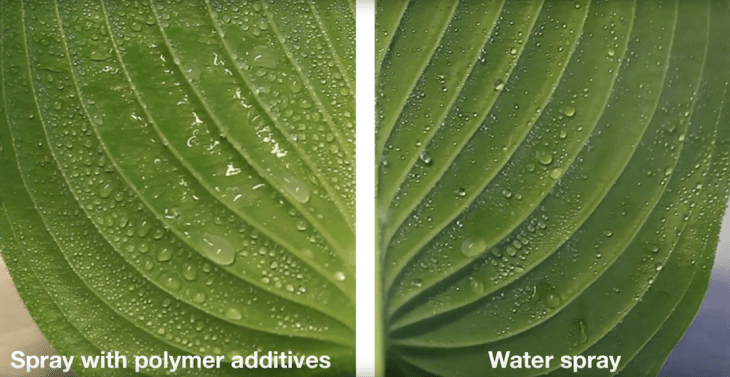Despite progress in creating bug-resistant crops, pesticide is still one of the most effective and cost-efficient ways to ensure good produce yields. But the current approach actually involves applying a huge volume of pest-control poison – way more than you need, because just 2 percent or so attaches to the plants. The extra 98 percent has a good chance of getting into lakes, streams and groundwater, resulting in a lot of pollution. Not so with MIT’s new ‘sticky’ pesticide.
MIT researchers found that using just two cheap additives, they can reduce how much of the applied pesticide “bounces off” of plants, making for far more efficient spraying of crops, and far less total volume of pesticide needed to achieve the same effects. All of which means less pollution making its way to the water table.
It’s something researchers have tried to do before, using soap-like additives that actually only resulted in smaller droplets bouncing off the surface of plants, which are more easily spread around via the wind. The new method devised by the MIT research team uses two different polymer substances, each of which carries an opposite polarity of electric charge. When the positive- and negative-charged droplets come in contact on leaves of the plant in the sprayed crop, they result in a water-attracting combo that helps subsequent drops stick to the surface. It’s especially effective since most leaves tend to repel water, so turning them into water-attracting magnets is a complete reversal.
In terms of efficacy, the researchers anticipate that this could result in farmers using as little as one-tenth the pesticide volume they currently employ to get the same results. That’s based on lab testing; real-world trials are still needed to se how well it actually works, and there’s a plan to do just such a pilot in India soon.
